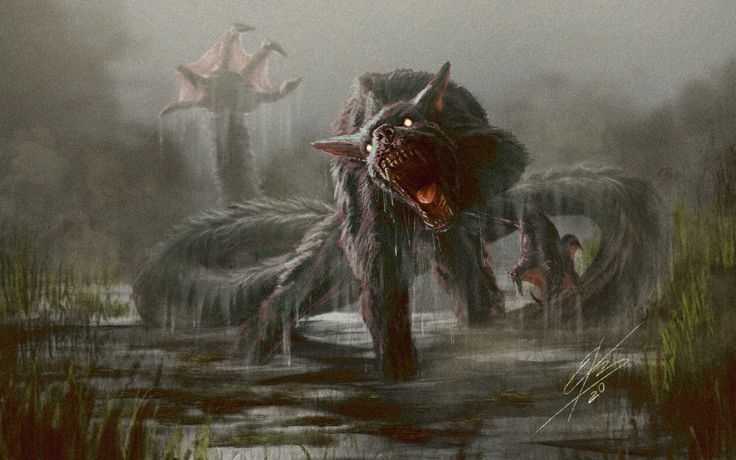The Ahuizotl, a creature steeped in the mythological tapestry of the Aztecs, is an embodiment of fear, intrigue, and the unknown. Often described in ancient texts, this mythical creature has captivated historians, anthropologists, and the general public alike with its unique characteristics and the symbolic role it played in Aztec culture.
Historical Context and Origins
The Ahuizotl (pronounced ah-WEE-zoh-tl) finds its roots in Aztec mythology, a culture rich in mythological creatures and gods. The Aztecs, who dominated central Mexico from the 14th to the 16th century, had a complex pantheon of gods and mythical creatures, among which the Ahuizotl was both feared and revered.
The Ahuizotl is described in various historical texts, most notably in the Florentine Codex, compiled by the Franciscan friar Bernardino de Sahagún. According to these descriptions, the Ahuizotl is a small, dog-like creature, with fur that clumps into spines, somewhat like a porcupine. Its most distinguishing feature, however, is a hand at the end of its tail, which it supposedly used to snatch humans and animals.
The Legend and Its Symbolism
The legend of the Ahuizotl in Aztec mythology is not just a tale of a fearsome creature but also a rich tapestry of symbolism reflecting the beliefs, fears, and the relationship of the Aztec people with their environment and the divine.
The Ahuizotl, often depicted as lurking in water bodies and preying on humans, symbolized the inherent dangers of the natural world. Water, essential for life and agriculture, was also a source of potential peril. Rivers and lakes, in particular, were seen as mysterious and sometimes treacherous places. The Ahuizotl embodied these dual aspects of water – as a life-giving force and a potential danger.

In Aztec belief, the Ahuizotl was more than just a predator; it was also seen as a guardian of the afterlife. This role is particularly significant given the Aztec’s complex beliefs about death and the afterlife. The creature’s habit of feasting on the eyes, teeth, and nails of its victims is symbolic of its role in transporting souls to Tlalocan, a paradise ruled by the rain god Tlaloc. Tlalocan was considered a place of eternal rest and abundance, particularly for those who died in water-related incidents, which were under Tlaloc’s purview.
The Ahuizotl’s association with Tlaloc, the god of rain, fertility, and water, underscores its importance in the Aztec religious cosmology. As a servant of Tlaloc, the Ahuizotl was a part of the broader narrative of life, death, and rebirth that was central to Aztec religion. Rain was crucial for survival in the region, and the Ahuizotl’s link to Tlaloc reflected the respect and fear that the Aztecs had for the forces of nature.
Sightings and Interpretations
The Ahuizotl, a creature from Aztec mythology, has been a subject of fascination and speculation, particularly regarding its possible basis in reality and the various interpretations of its legend.
The historical sightings of the Ahuizotl are confined to the accounts found in Aztec codices and oral traditions. There are no documented encounters in the modern era that can be reliably attributed to the creature as described in mythology. The primary source of information about the Ahuizotl comes from the Florentine Codex, where it is described in detail by Bernardino de Sahagún.
Some theories suggest that the legend of the Ahuizotl may have been inspired by real animals, possibly misidentified or exaggerated over time. For instance, the description of the Ahuizotl could be based on an encounter with an unknown or now-extinct species, or it could be an amalgamation of features from several known animals, typical in mythological creature representations.

From an anthropological perspective, the Ahuizotl is viewed as a part of the rich tapestry of Aztec mythology, embodying the culture’s understanding of and relationship with the natural world. In cryptozoology, while the Ahuizotl is occasionally referenced, it is generally regarded as a mythological being rather than a cryptid likely to be discovered in modern times.
Symbolically, the Ahuizotl represents more than just a physical creature; it embodies the Aztecs’ fears and beliefs about the unknown and the dangers of the natural world. It also symbolizes the protective yet perilous nature of water bodies in Aztec culture and the spiritual connection between the earthly realm and the afterlife.
Cultural Impact and Legacy
The Ahuizotl remains an integral part of Mexican folklore. It has been referenced in modern literature, art, and popular culture, often symbolizing the mysterious and dangerous aspects of nature. The creature has also been a subject of interest in cryptozoology, though it is generally regarded as a mythological being rather than a cryptid likely to be discovered in modern times.

The Ahuizotl is a captivating example of the rich mythological culture of the Aztecs. As a creature of legend, it embodies the fears and beliefs of the people who lived in harmony and conflict with the natural world around them. While it may never be known if the Ahuizotl was real or purely mythical, its story continues to fascinate and serve as a reminder of the complex belief systems and the power of myth in ancient civilizations.


















